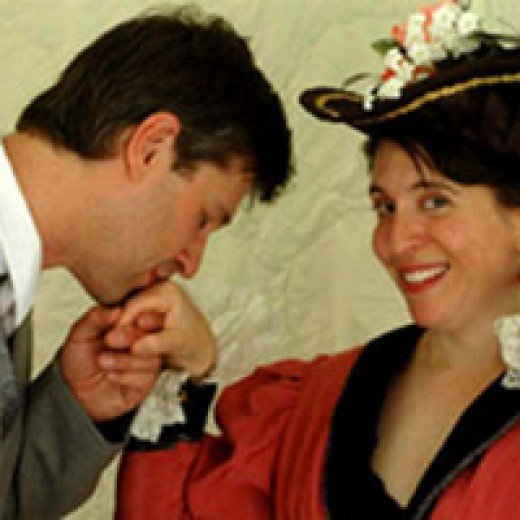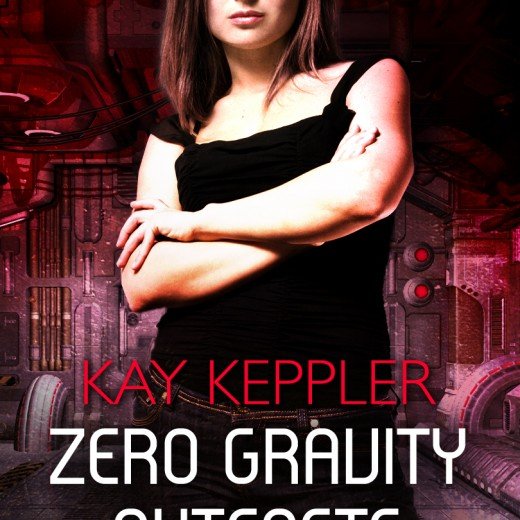Say That Again: Writing Dialogue by Kay Keppler
 Let’s welcome back monthly columnist, editor, and novelist, Kay Keppler, as she shares with us about writing dialogue. Enjoy!
Let’s welcome back monthly columnist, editor, and novelist, Kay Keppler, as she shares with us about writing dialogue. Enjoy!
***
People talk to each other all the time, so it seems as though writing dialogue should be simple. But many writers trip up over making dialogue sound natural. Here’s a sample of something I see frequently when I’m editing manuscripts:
“Don’t you dare!” he said.
She was silent.
“I do dare,” she said.
So how silent was she? Not silent at all. In fact, she spoke. So what should this author have written? If he wanted to convey that the character didn’t respond immediately, he could have written:
“Don’t you dare!” he said.
She paused.
“I do dare,” she said.
In this way, the reader knows that the character had to think about what she wanted to say. If you’re writing the scene from the woman’s point of view, you can show the pause by letting the reader know what she’s thinking:
“Don’t you dare!” he said.
How dare he try to stop her? Hadn’t she made the tough decisions? Hadn’t she earned the right to act?
“I do dare,” she said.
Writing good dialogue poses other challenges.
Watch out for:
Monotones. Each character should have a distinct voice with a unique pattern of speech and vocabulary. Writing specific dialogue styles also helps you with characterization. However, don’t overdo writing dialects. Using many words that are abbreviated or misspelled to convey accents is hard to read and can be off-putting for many readers.
Info-dump. Don’t let your characters explain to each other facts they already know as a way to reveal backstory. For example:
“Well, as you know, Bob, when you were eight, our house burned down,” said John. “I escaped, but you were badly burned.”
“And that’s why I hate to go camping!” Bob said. “I fear campfires. And marshmallows.”
Find a better way to weave that information into the storyline. And unless one character is trying to find another in a crowded room or across the midway at the county fair, don’t have one character address another by name. In real life, people don’t talk like that. Establish identity in a different way, preferably with a simple dialogue tag.
Small talk. In real life, when you meet a friend on the street or pick up the phone, your conversation might go like this:
“Hi, how are you?”
“Fine. You?”
“Great. What’s up?”
However, fiction has to be better than real life. In your story, cut this useless dialogue and go straight to the good parts—whatever advances plot, prompts action, or reveals character.
Inflated tags. Stick to he or she “said.” You don’t need stronger verbs like “shouted” or “muttered,” and you especially need to avoid tags like “barked” and “growled”—verbs that only characters from the animal kingdom can like.
Convey the weight and volume of your character’s statement by writing strong dialogue, rather than relying on the tag to convey the emotion you want the reader to understand.
“Said” is a word that disappears on the page, and that helps keep your readers engrossed in the story and turning pages.
Too many tags. You don’t need a “he said,” “she said” after every line of dialogue, but at the same time, don’t have so few that readers get lost about who’s speaking. Ask a friend to read the page. If they get lost about who’s speaking, add a couple of tags to keep it straight.
Stilted exchanges. Read your dialogue out loud and see if it sounds like something your characters would say. Use contractions, sentence fragments, or other shortcuts that people normally use in conversation.
Say What?
Reading dialogue is fun for readers; it clarifies your characters’ personalities and shows, not tells, what your characters think and feel. If you have trouble getting dialogue to sound natural, pay close attention to conversations around you and the interactions you have every day with your coworkers, friends, kids, neighbors, store clerks, ticket takers, bus riders, people standing behind you in line at the grocery store—even people you listen to on YouTube. You’ll get lots of ideas about how to make your characters’ conversations come alive.
***
ABOUT THE AUTHOR
Kay Keppler is an author Zero Gravity Outcasts, Betting on Hope, Gargoyle: Three Enchanting Romance Novellas, and editor of fiction and nonfiction –Angel’s Kiss and Outsource It! She lives in northern California. Contact her here at Writer’s Fun Zone in the comments below, or at kaykeppler@yahoo.com to ask questions, suggest topics, or if you prefer, complain.
is an author Zero Gravity Outcasts, Betting on Hope, Gargoyle: Three Enchanting Romance Novellas, and editor of fiction and nonfiction –Angel’s Kiss and Outsource It! She lives in northern California. Contact her here at Writer’s Fun Zone in the comments below, or at kaykeppler@yahoo.com to ask questions, suggest topics, or if you prefer, complain.






